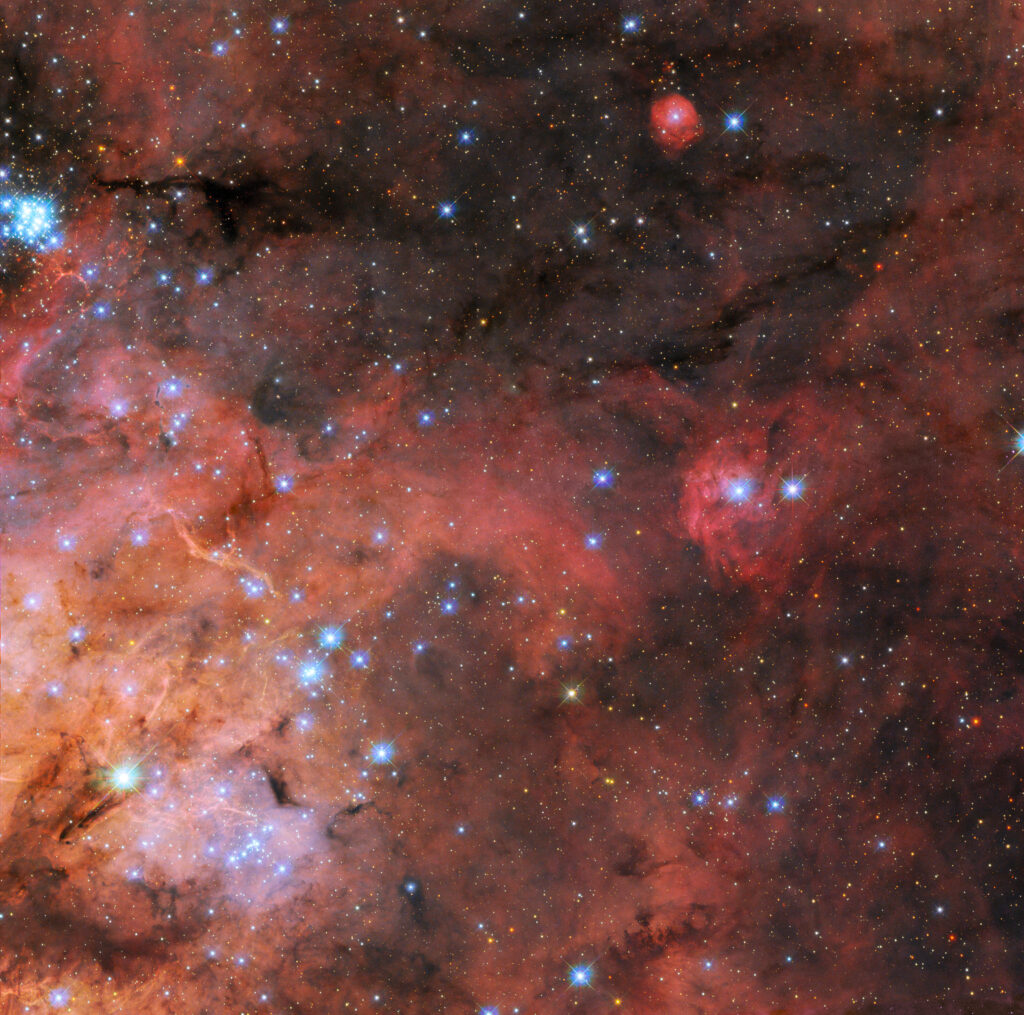Specialists of the Hubble mission support group published a new colorful image of deep space. It captures the 30 Doradus nebula, also known as the Tarantula Nebula.

The Tarantula nebula is a giant cloud of ionized hydrogen, which length exceeds a thousand light-years. It is located at a distance of 161 thousand light-years from the Sun in the Large Magellanic Cloud, a dwarf galaxy that is a satellite of our Milky Way. Right before our eyes, new luminaries are forming in the depths of the nebula. In fact, it is an ideal natural laboratory that allows us to observe firsthand how the processes of active star formation develop.
Also, the Tarantula Nebula is home to some of the brightest and most massive luminaries known to science. Among them is the blue hypergiant R136a1, which exceeds the mass of the Sun by 200 times. In addition, in 1987, a supernova SN 1987A broke out on the outskirts of the Nebula. It became the first supernova observed in the Earth’s sky with the naked eye in the last 300-plus years.
It is not surprising that the nebula can be called an “old acquaintance” of Hubble. Astronomers have repeatedly pointed a telescope at this region, trying to uncover its secrets. A new photo taken by it shows thin foggy clouds filling the nebula, through which the black background of space can be seen in some places. In the lower part of the left corner, you can see large clusters of brightly glowing gas and dark dust, as well as a group of recently formed blue stars. Many less bright stars are scattered throughout the nebula.
The Hubble image of the nebula combines data from two different observations. The purpose of the first is to study interstellar dust, which makes up the characteristic dark clouds that can be seen in the image. The second was carried out as part of a program to study the features of star formation in conditions reminiscent of the early Universe, as well as to catalog stars for future observations using the James Webb Telescope.
Recall that Hubble recently photographed a variable star in the Orion nebula.
According to https://esahubble.org
Follow us on Twitter to get the most interesting space news in time
https://twitter.com/ust_magazine
